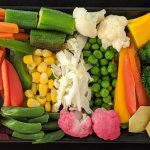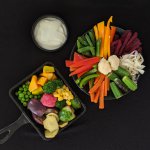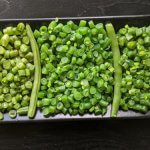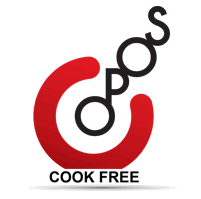Techniques – #P for PressureBaking



High heat, Low time, No water. It has taken us 15 years to learn this mantra, to make food come alive.
Retaining colour, maximising flavour, texture and taste has been the Holy Grail of cooking. It took us thousands of experiments to crack it.
Pressure cooking food in its own juices, without water, without using inner vessel, over the highest possible heat, for the shortest possible time were all techniques never practised before we developed them, step by step. Each refinement took us years. There is the work of hundreds behind it. Every step of this journey has been documented and validated.
We had been struggling with the colour retention problem for a long time. One of our earlier members had posted a solution way back in 2005, in another forum. “Cook 250g of vegetables with 1tbsp water for 2 whistles. Wait for 2 minutes and release pressure”. This is the earliest recorded mention of minimal water pressure cooking. But this technique did not widely catch on, as it needed many more refinements before magic happened.
We tried cutting out the water completely and posted the No Water way to cook vegetables in their own juices. This addressed half the problem, but still did not do magic. It did not ignite member interest in cooking up a variety of veggies. Many members flatly refused to OPOS coloured vegetables.
Some pieces of the puzzle were still missing. We later realised the trick was to cook food in its own juices, at the highest possible heat for the lowest possible time. This meant you cook without water, at high heat, for a very short time, release pressure immediately and instantly transfer the vegetable to a cooler vessel to stop cooking. Even a few seconds delay dulls the colour. With these final pieces falling into place, Pressurebaking was born. Now, everything clicked together and magic happened. The floodgates opened with member validations pouring in. They would never cook vegetables any other way ever again. Pressure baking was here to stay!
Pressurebaking is an OPOS technique of cooking food in its own juices at the highest possible heat for the lowest possible time. This produces dramatic results. It heightens flavours, colours, textures and promises greater nutrition. It is just too good to be true.
Pressure cooking Vs. Pressure Baking:
Pressure cooking: Food is cooked with added water.
PressureBaking: Food is cooked in its own juices, with little or no water.
Pressure cooking: The only technique used is ‘dump all in a cooker’.
PressureBaking: Layering is crucial
Pressure cooking: Exercises very little control over texture, flavour or colour.
PressureBaking: Exercises complete control over texture, flavour and colour.
Pressure cooking: Is chiefly used for mushy foods like dal, potatoes and kichidi.
PressureBaking: Can be used for almost all food.
Pressure cooking: Causes vegetables to get overcooked, become colourless and textureless.
PressureBaking: Makes vegetables come alive.
Pressure cooking: The goal is quick cooking.
Pressure Baking: The goal is to maximise colour, texture, flavour and nutrition. The ultra fast cooking is not a goal, but a bonus.
Pressure cooking: Most recipes call for cooking on low/ medium heat.
PressureBaking: All recipes call for cooking on the highest possible heat.
Pressure cooking: Cooking conditions need not be standardised for recipes to work.
PressureBaking: Both the pot and the heat source need to be standardised for the recipes to work.
Pressure cooking: Seen as a necessary evil. Many households frown on pressure cooked food.
PressureBaking: Seen as a boon. Babies love OPOSed food.
Pressure cooking: Heat transfer is 504 Kj/Kg.
PressureBaking: Heat transfer is 2706 Kj/Kg, making it five times faster than Pressure Cooking.
